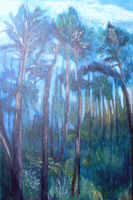Today I received another thread in my continuing search for my relatives in the United Kingdom. As you may recall (see entry: Finding My British Family 11/28/2009) I have been following the history of Louis Kodish and Annie Singer. Louis Kodish was born in London around 1900, immigrated to the US in 1929 with his wife Katherine and returned to Glasgow in 1934. He came to his cousin Abraham Singer who was also my grandmother’s cousin and returned with his wife Katherine to his father Marks Kodish in Glasgow. This much I had learned from immigration records to and from the US.
As his relationship was to my relatives from Dunilovichi, I am operating under the assumption that his father was also from Dunilovichi and have hopes of linking yet another family to mine. I know that there were Hedeshes from Dunilovichi in the Dunilovichi cemetery and names spelled Khodis or Khodos in the 1834 and 1850 Revision Lists for the town. No linkages yet, but I remain hopeful that a puzzle piece will click into sharper focus.
In February of this year I sent for the visa records of both Louis and Annie from the U.S. Citizenship and Immigration Services. Two months later I received Annie’s record and today, six months later I received the record for Louis. This is relatively fast compared to the year or more it used to take before they started charging for their services.

The file for Louis was interesting, but didn’t provide anything new for me to pursue. Included in the visa file was a photo that was clearly the same person who sent a photo to one of my father’s cousins signed “your cousin, Louis Kodish”. The application provides his address and that of his father. His mother was deceased by 1929 when he was submitting this record. His father’s name was given as Marks. Most of this I already knew from immigration records. The one new piece of data came from a copy of his birth certificate which gave his mother’s name as Kate Epstein. The last name of Kodish was spelled Cordis. Back to the cemetery where I found no Epsteins. Quite possibly his mother was not from Dunilovichi..

Annie’s file also showed a photograph of a young woman in her 20s. She was born in London in 1907 and lived in Jerusalem from 1923 to 1928 when the visa was issued. I did the math and found that she went there at age 16. Her mother Sarah was indicated as deceased and her father Meyer was no longer in London, but back in Diniavolitshe, Poland, presumably Dunilovichi. Perhaps he returned after his wife’s death and his daughter decided to venture into Palestine rather than return home with dad. Now in 1929, tiny Annie, at 5’1 ½ “ was leaving Palestine to go to Brooklyn to stay with her uncle Abraham Singer, my grandmother’s cousin. I am struck with the sheer adventurousness of her journey.
Her birth record indicated that her mother Sarah Singer was also formerly a Singer. Communities were small and marriages to cousins were common. In addition to the birth record there was a certificate showing that she was free of trachoma and a Certificate of Character from the Department of Police and Prisons.
So from the visa files, I now have a little piece of additional information for both Louis and Annie on their mother’s names. I can continue to search for Louis and his father Marks in Glasgow. Annie’s trail in London seems to have grown cold with her departure and her father’s return to Dunilovichi. I may see if I can find a record of her original immigration to Palestine and some further trace of her father in Dunilovichi. She appears to have vanished in America, no doubt marrying and changing her name, the curse of genealogists.
And while on the subject of my Dunilovichi relatives, I did have one ah-ha moment recently concerning the timing of my great-grandfather’s immigration. I knew that my great-grandfather came to the US in 1904. What else happened in that year? It dawned on me that my great-great grandfather died in 1904 in Dunilovichi, a fact I learned upon my visit. No doubt there was a relationship between those dates. To test that theory I checked the month in which my great-great grandfather died against the month in which my great-grandfather immigrated. Sure enough, my great-grandfather waited until his father’s death to immigrate leaving just a month or two after his death. Somehow that is a humanizing detail. Now I picture a son waiting for his father to die before he felt free to leave, perhaps waiting out an illness to be at his father’s deathbed. It is in these dribbles and drabs of information that we begin to piece together a story, a narrative about our ancestors’ lives that reminds us that they really lived with all the human emotions and drama that can accompany our own journey.













